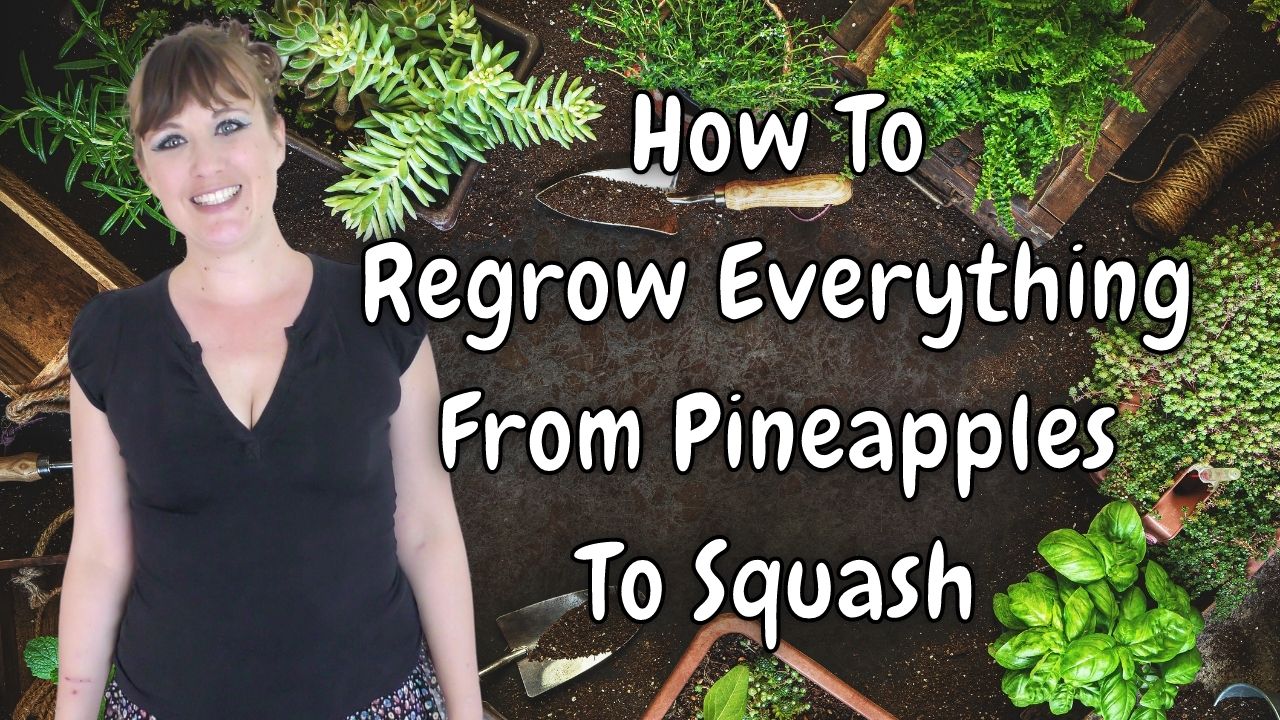As an Amazon Associate I earn from qualifying purchases.
On the JJ Barnes Blog, I take a look at hacks for how to regrow fruit and vegetables, to cut down on food waste and get more for my money!
I’m not known for my green fingers. However, my mother-in-law is an expert gardener and constantly has freshly grown delicious vegetables ready to eat. With the cost of living crisis sending food prices rocketing, and the environment being an evergrowing concern, I’m wondering if I should be taking a green leaf out of her book.

BUY NOW ON AMAZON
To help me work out if this is something I could turn my hand to, the experts at Coupon Snake sent over their hacks for how to regrow fruit and vegetables from leftovers!
How To Regrow
Since spring has officially arrived, the ideal time to get ready for the growing season is now. Reusing food scraps is an easy and inexpensive solution for many given that the UK typically throws away approximately 9.5 million tonnes of food waste each year.
Coupon Snake have shared which fruits and vegetables can be grown again from our leftovers this spring. A few unused pots, a few jars, and a few scraps that you normally throw away can help you get started in gardening.
When it comes to growing your own food from leftovers, there are three important rules to follow:
- If you don’t change the water every day, your fruit or vegetable will start to smell bad and become slimy.
- The scraps should be placed on a windowsill that faces west to receive indirect sunlight.
- When they are mature enough to be planted outdoors, regularly water the roots to ensure that the ground remains firm.
Vegetables for bulbs:
Bulb vegetables like cabbage, celery, lettuce, and bok choy are among the easiest to regrow because all you need to do is cut off the base, which should leave about two inches. Change the water in the bowl every day after placing the cut-side-down scraps in it. The bowl should hold enough water to cover the base.
You should begin to see sprouting within three to four days; however, the plants need sunlight to grow. You can transplant them into the garden once the roots begin to form. Make sure the new stems are above the ground and completely covered with roots and base.

BUY NOW ON AMAZON
 Vegetable Roots:
Vegetable Roots:
Root vegetables like carrots, radishes, beetroots, turnips, spring onions, and onions can easily be regrown using soil or water. If you place the cut-side-down scraps in a shallow water bowl after cutting them, the root-bearing top portion will regrow.
These can be kept inside the house, and after a few weeks, new greens will start to grow. Plant the side roots completely outdoors, covering the root and base in soil once you can see them. Root vegetables’ ability to be harvested and continually regrown is their best feature.
Vegetables with seeds:
To regrow vegetables such as peppers, squash, chilies, bean sprouts, pumpkin, and cucumbers, cut thin slices from your seeded vegetables and let them dry on the side. This makes it easier to get the seeds and use them. Then, collect the seeds and put them in a container with soil.
Place the pot in a warm area trying to water day to day and trust that the seeds will begin growing. Repot the plants in your garden after the sprouts have broken through the soil.
Another option is to take the seeds out, scatter them on a bed of soil, water them every day, and watch the magic happen.
Fruits:
Avocados, lemons, oranges, apples, cherries, peaches, and plums are a few of our favorite fruits that have seeds that can be used again. Rather than hurling them out, save them and plant them in fruitful gardening soil. Fruit trees can take years to grow and form, but once they do, you’ll always have fresh fruit to eat.

BUY NOW ON AMAZON
Strawberries Make use of a pair of tweezers to remove the berry’s outer skin or the seeds. Place the seed or skin in a filthy container, cover it with soil, and place it in a warm, sunny area. Maintain constant watering until sprouts appear, after which transplant them to a strawberry pot in the garden for continued growth.
Pineapple Fortunately, you don’t have to live in a tropical nation to grow this delicious fruit. The results are well worth the wait, which takes two to three years to see the first crop! Because pineapples tend to rot quickly, cut off the top and dry it. Leave the top in a bright spot for warmth and light and plant it in soil with the leaves sticking out. It will require at least eight hours of sunlight per day, and you should water it when the soil is dry. Inside three to four months you will see roots growing.
Ingredients:
Buy organic, untreated potatoes for the best regrowth results because potatoes are susceptible to disease. Put a few potatoes in a brown paper bag and leave it somewhere dark. Once each has three to four shoots, remove them from the bag and check for sprouting every few days.
Cut into equal parts, guaranteeing both have fledglings, and pass on to dry for two days. Place each half in eight inches of fertile soil after it has dried.
Advantages Of Regrowing
Zach Morgan, a gardener and horticulturist from Fantastic Services, shared the advantages of regrowing our food scraps.
Methane emissions from landfills can be reduced by planting leftover fruit and vegetable scraps in your garden. Anaerobic decomposition is the process by which organic waste decomposes without oxygen when it is dumped in landfills. Methane, a potent greenhouse gas that contributes to climate change, is produced by it.
Because food scraps can decompose aerobically without producing methane, you can use them to enrich the soil in your garden and divert organic waste from landfills. You will promote a more environmentally friendly way of life this way.
Conclusion
While I am never going to have the kind of bountiful garden full of vegetables that my mother-in-law has accomplished, these simple tips for how to get a little grow happening seem easy to follow and possible for a novice like me!
Do you do any regrowing? Do you find it an easy and satisfying way to reduce waste and grow your own food?
Amazon and the Amazon logo are trademarks of Amazon.com, Inc, or its affiliates.






